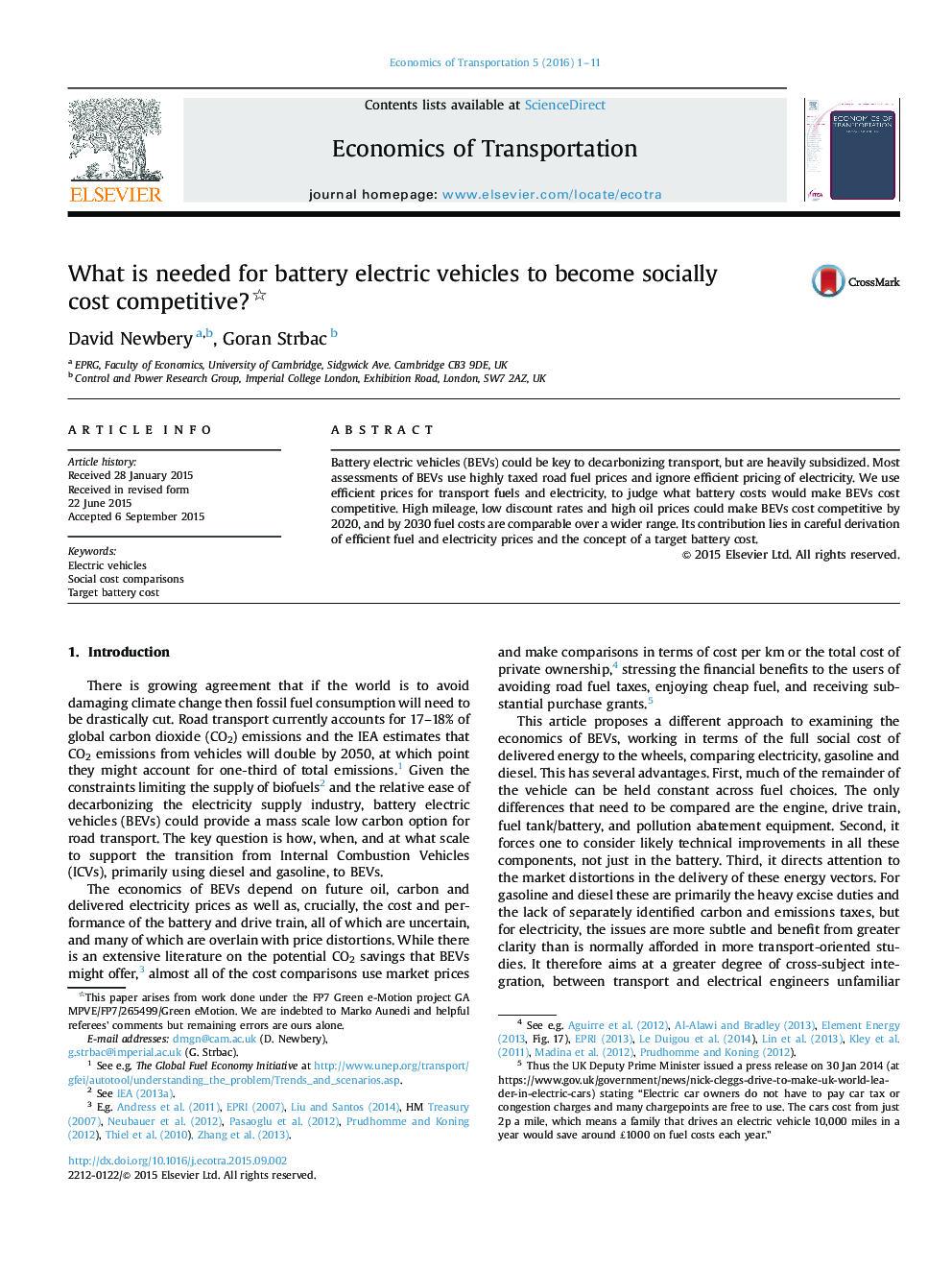| کد مقاله | کد نشریه | سال انتشار | مقاله انگلیسی | نسخه تمام متن |
|---|---|---|---|---|
| 5062859 | 1476651 | 2016 | 11 صفحه PDF | دانلود رایگان |

- Road fuel is heavily taxed, battery electric vehicles (BEVs) are heavily subsidized, obscuring economic comparisons.
- In contrast to most studies, we compare costs of BEVs and conventional vehicles at efficiency prices.
- The study projects the likely range target battery cost at which BEVs are cost competitive in 2020 and 2030.
- Cost parity depends sensitively on oil, carbon and electricity prices, future battery characteristics, km/yr and BEV maintenance costs.
- There are possible scenarios for cost parity by 2030, and a much wider range by 2030.
Battery electric vehicles (BEVs) could be key to decarbonizing transport, but are heavily subsidized. Most assessments of BEVs use highly taxed road fuel prices and ignore efficient pricing of electricity. We use efficient prices for transport fuels and electricity, to judge what battery costs would make BEVs cost competitive. High mileage, low discount rates and high oil prices could make BEVs cost competitive by 2020, and by 2030 fuel costs are comparable over a wider range. Its contribution lies in careful derivation of efficient fuel and electricity prices and the concept of a target battery cost.
Journal: Economics of Transportation - Volume 5, March 2016, Pages 1-11